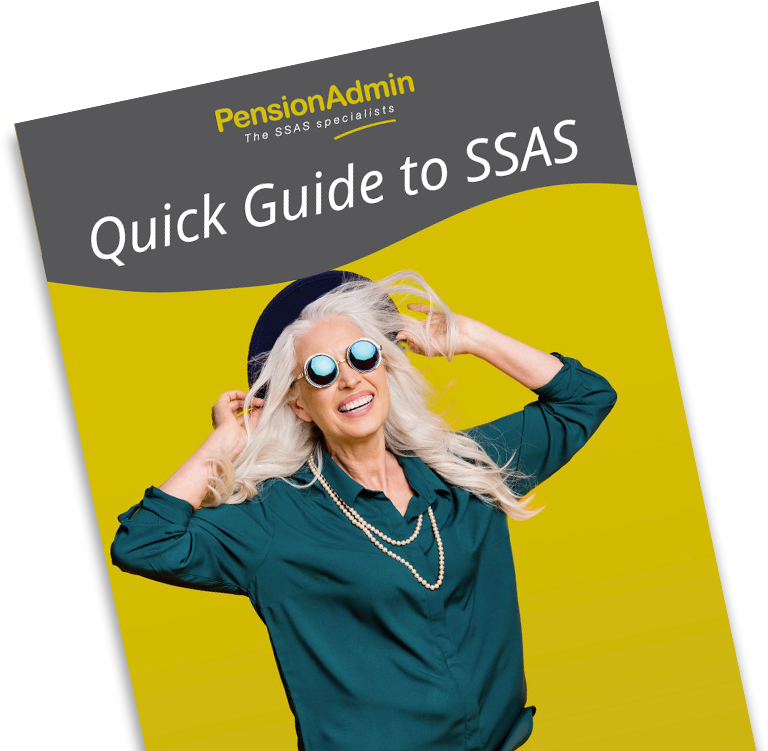What is a SSAS?
A Small Self Administered Scheme (SSAS) is an occupational pension scheme that gives its members and Trustees lots of flexibility and control over what it invests in.

So what exactly is a SSAS?
A Small Self Administered Scheme (SSAS) is an occupational pension scheme that gives its members and Trustees lots of flexibility and control over what it invests in. A bit of technical speak: It is a specific form of trust which complies with the Finance Act 2004 and is registered with HM Revenue Customs & Excise (HMRC) as a registered pension scheme.
A SSAS is set up on a “money purchase basis”. This means that the money members get out of the scheme when they retire depends on how much money is paid in for them, and how their investments perform.
The scheme can have up to 12 members and they are most likely to be directors, family or key employees of a company – which is known as the ‘sponsoring employer’. Members must be over the age of 18 and for our schemes, all members are also Trustees.
The sponsoring employer is the company who pays the contributions to the scheme for its employees. Contributions can be varied in line with its profits and there is no commitment to pay any level of contributions so no profit one year = no contributions have to be made.
Any contributions made to the scheme are tax relievable which means they are deducted from the company profits when calculating its corporation tax bill. Contributions can be made regularly, as one offs or a combination of both.
There is a maximum level of contributions that can be made for members and the level will vary depending on each member’s circumstances. We always check this out once we have details about each member.
An employer can have more than 1 SSAS and the company is active and trading.
The benefit of a SSAS is that it isn’t tied to a particular provider so it can be moved to another provider if you are not happy the service you receive. The same goes for our SSAS’s, if you are unhappy with our service, you can choose another provider to deal with your scheme.
We do not charge for you to move (to us or away from us), that’s how confident we are that you will be happy with our service. Any member can also transfer their share of the scheme to another pension scheme if they no longer want to be part of the scheme. The scheme can also be wound up once all members have been transferred out.
More information about SSAS
Here are some of the common questions our team gets asked about SSASs. Hopefully your questions will be here, but, if not, don’t hesitate to get in touch.
How does a SSAS work?
Formal documents are required to set up the scheme which the sponsoring employer and member trustees will need to sign. We provide all of this for you once you have completed our application form. When the documents have been returned to us, we register the scheme with HMRC.
HMRC will review the application and once they are satisfied that the scheme is legitimate; they “approve” the scheme. You are then ready to go!
The SSAS will have its own bank account as funds are kept completely separate from any funds held for the employer. The money in this account can be invested and any further contributions are paid into this account. Any investments the scheme members decide to make are made from this account too.
Each member has their own share of the scheme called “share of fund”. So, for example, a scheme has 2 members being Lola and Josie. They run an online fashion store and set up a SSAS, but Lola works part time and Josie works full time. Lola has a contribution of £40,000 paid for her and Josie has £60,000. The split of the scheme is therefore 40% to Josie and 60% to Lola. Lola receives 40% of the interest in the bank account and Josie receives 60%. This is because Josie has the larger share of fund.
Can I transfer my other pension policies into my SSAS?
You certainly can. A lot of people have other pension plans, either from old jobs they used to have or a plan they contribute to now. These can be transferred into a SSAS.
What can the scheme invest in?
As we have said previously, a SSAS is truly flexible and gives members lots of freedom to choose investments which they find interesting to them. So, let’s have a look at what can be done with the funds once they are in the scheme:
- It can buy commercial property (which can be leased back to your business) and Land
- It can lend money to the sponsoring employer
- It can invest in stocks and shares on both the UK and recognised overseas stock exchange
- It can buy unit trusts, bonds, OEIC’s and gold bullion
- It can buy shares in the sponsoring employer
- Money can be lent to the scheme to help buy something for example, an office block
- It can keep funds in cash – fixed term deposits are popular as they pay higher rates of interest
We like to make sure clients have the full picture of what a SSAS can and can’t do. A few examples are listed below of what the scheme can’t do (well it can do these things, but you will be penalised with extortionate tax fines which basically make them pointless):
- Residential property unless it is employment related. A shop with a flat above is ok, as long as the flat is leased to the shop manager as a condition of his employment.
- It cannot lend money to scheme members or people connected to members
- It cannot buy single hotel rooms
- It cannot buy any item of tangible moveable property – basically, anything you can move or touch for example cases of fine wine, a selection of vintage cheeses, a racehorse or cars
- Personal chattels
Please remember though, these lists are not definitive. If you’ve got something specific in mind that you would like to do, give us a call or drop us an email and we will take a look at it for you.
How can I lend money back to the sponsoring employer?
Ok, this is called a loanback and is one of the most used facilities available under an SSAS. If you want a quick overview, carry on reading. We also have a more comprehensive guide available here if you want to fully check out the facts but we will summarise the key points now.
A loanback can be made but it must match 5 criteria to be acceptable to HMRC and these are:
- The maximum loan that can be made is 50% of the value of the SSAS less any existing loans. All loans must be made for genuine reasons of assisting the trade of the borrower
- It must be repaid within 5 years
- The company must pay back both capital and interest on an annual basis at least.
- The loanback interest rate must be 1% above the average high-street bank base rate. The loan interest is allowable as a business expense for tax purposes and is paid back into the scheme
- Loans must be secured against a first charge. You can use various items as security and commercial property or residential property can be used
We provide all of the paperwork needed to do a Loanback and take all of this in hand for you. You can choose your own solicitor or legal adviser to place the charge upon the security; we do not force you to use any particular company.
The SSAS can also loan to unconnected third-party companies where a sound investment proposal exists and it may not need to be secured.
how do I purchase a commercial property?
Here are some advantages of buying a commercial property:
- If purchased from your company, it can inject cash flow back into the business
- Tax relief is received on any contributions used to purchase the property
- Costs and fees to buy the property are payable from the SSAS
- The property is protected from creditors in the event of insolvency
- Growth in the value of the property when sold is free of Capital Gains Tax
- Rent paid by tenants provides a regular income which is free from Income Tax
- Rent is an allowable business expense if the premises are used for the member’s own business
Don’t forget, the SSAS can borrow up to 50% of its value (less other loans of course) to help fund the purchase if it is short of cash.
The SSAS can also register for VAT meaning that VAT can be reclaimed on the purchase price.
If you want to know more about buying a commercial property, click here and we will take you to a more comprehensive guide.
What are your charges?
We keep our fees transparent and fixed. We do not provide administration on a time-cost basis and our fees are agreed with new clients during our initial discussions. The reason for this is that an SSAS worth £6,000,000 with lots of different investments needs lots more administration than one worth £90,000 with 1 investment. It isn’t fair to charge the same fees to both clients.
We speak to you about fees in our first discussion and can give you a quotation once we understand what you are trying to do with your scheme and have an idea of how much work is needed. By the way, we are not salespeople so will never give you a hard sell – we give you the facts plus a quote and leave you to decide if you want to proceed.
We are very competitive and we are sure you will be very happy with both the price and service quoted by us.
Can I set up an SSAS if I don't have a trading employer?
Some administration companies may do this for you but unfortunately, we won’t be able to help you with a SSAS in this instance. Our interpretation of the rules is that a SSAS is an occupational scheme to provide benefits for its employees. If the company is not trading, it doesn’t have trading income. Without that, it’s not paying any staff and therefore, it has no employees. If you are however creating a legitimate trading company, then that may be different.
If your SSAS is already set up – that is also different, and we may be able to help you with that. It’s not unusual for a SSAS to have a sponsoring employer that has dissolved since the scheme was set up and this is no problem.
OK...so when I retire, how do I get my pension?
This topic is very worthy of a guide all of its own so please click here to get it!

Ask us a question
If you have a question about pensions, ask us. Fill in the boxes below, hit “send it” and we will come back to you.

Download our free SSAS guide
If you are interested in learning a bit more about SSASs, please download our free SSAS guide here
